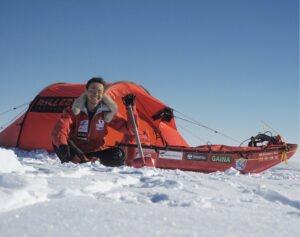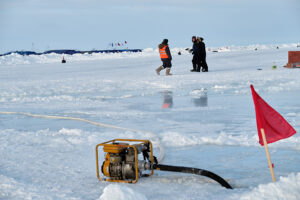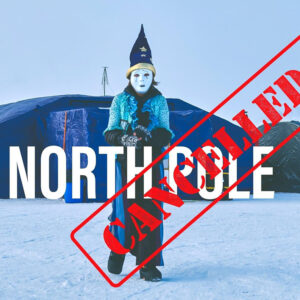After a gap year because of COVID, the Antarctic season has begun again in earnest.
Because of relatively late confirmation of an open season, and the understandable difficulties training and securing sponsorship, only a handful of expeditions have made it to the ice.
Packshaw and Facer-Childs kite-ski expedition
The first expedition to set off, Justin Packshaw and Jamie Facer-Childs are already two weeks into their journey. The Brits left from the Russian Novolazarevskaya base and plan to kite-ski 4,000km. They will pass the Pole of Inaccessibility and the South Pole on their way to a Hercules Inlet finish point.
The pair have covered 217km so far, but winds up to 111kmph have kept them tent bound for a few days. They need wind, but that is too much of a good thing. “Mother Nature is not giving us much leeway,” Packshaw wrote on November 24, 13 days into their expedition.
Martin Hewitt and Lou Rudd
Martin Hewitt and Lou Rudd left Hercules Inlet a week ago on their unsupported trek and have likewise been fighting the wind.
Hewitt has had a tough start. He has taken a couple of falls in whiteout conditions and has been ill. On day seven, it was serious enough that they consulted with the Antarctica Logistics & Expeditions (ALE) doctor. The doctor suggested a rest day, but Hewitt gave skiing a go, and the pair managed to cover 23km.

ALE has been busy preparing for the season. At Vinson Base Camp, this involved digging out their tents. Photo: ALE
Solo expeditions to the Pole
Two solo expeditions have also set off. Preet Chandi is now on day two of her unsupported 1,130km expedition from Hercules Inlet to the South Pole. On social media, she reports that conditions are windy but with good visibility on day one. She is dragging an 87kg sled, light for that distance.
Masatatsu Abe has set out from 80°S, 156°W on the Ross Ice Shelf. It is a unique starting point, chosen in tribute to Japanese explorer Nobu Shirase’s 1911 Antarctic expedition. Shirase’s expedition never made the Pole, and Abe plans to finish the route. He hopes to cover the 1,200km in less than 65 days.






